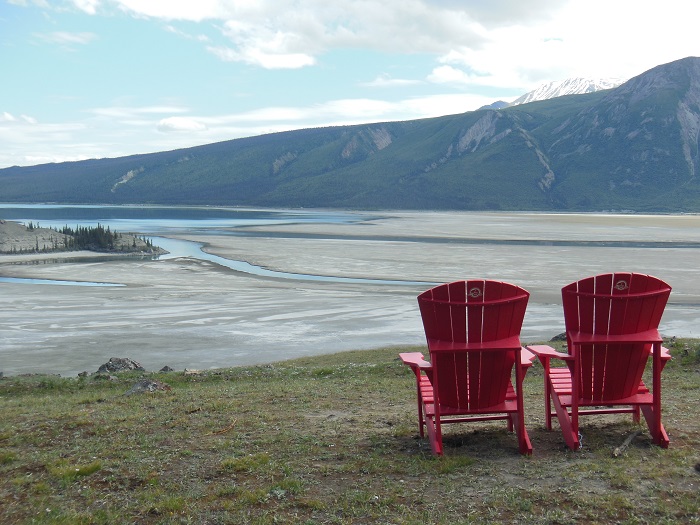[Yukon]
Corduroy again today. Road still in bad shape after recent rains. Slowly this mud hole is resembling a road. (Soldier’s diary, August 24, 1942)
It may have been President Herbert Hoover’s dream in 1930
to build an overland link from Alaska to the continental United States,
but it wasn’t until the Japanese bombed Pearl Harbor in 1941
that it was deemed a military necessity to do so.
The construction of the Alaska Highway
was authorized by President Roosevelt on February 11, 1942,
and within a month, the right of way was approved
by the Canadian government.
The U.S. would pay for the construction of the highway
and turn over the portion in Canada to the Canadian government
when the war ended.
In the best of times,
it would be an ambitious goal
to build a 1,525-mile road from Dawson Creek, British Columbia,
to Fairbanks, Alaska through the three M’s –
muskeg, mountains, and mosquitoes –
but to literally carve this road out of the wilderness
in only eight months was staggering.
It took 11,000 American troops
and 16,000 civilians from the U.S. and Canada,
laying down eight miles of road every day,
seven days per week,
suffering from hypothermia,
fatigue,
and injuries,
to complete the task.
Incredible, really,
when you think about it.
Bitter cold. Canteens frozen and diesel fuel like soft lard. (Soldier’s diary)
Finally, in a ribbon-cutting ceremony
performed in -35-degree weather,
and in the presence of 250 soldiers, civilians,
and Royal Canadian Mounted Policemen,
U.S. and Canadian officials opened the road.
Today’s highway doesn’t look anything
like the highway that was built in 1942.
That highway had 25-degree grades in some spots,
which just wouldn’t do in a post-war environment.
Since 1964, the Canadian Department of Public Works
has been improving the worst parts of the highway each year.
Today, it is an all-weather, hard-surfaced
(except in spots where there is construction) highway,
suitable for drivers like myself,
who don’t like to drive through the muck.














